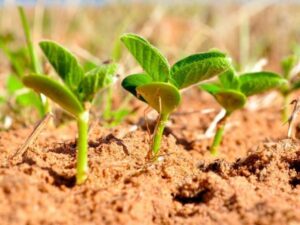Marking a decisive shift in global agriculture, sustainable soybean cultivation is entering an era defined by nuanced innovation, environmental urgency, and market evolution. Fields once punctuated by the repetitive churn of conventional practice now teem with data-driven solutions and ecological stewardship. Not everything aligns perfectly yet—some methods outpace infrastructure; others demand new skills that farmers must learn between seasons.
Consider the increasing use of variable-rate technology on U.S. soybean farms. With grid-based soil sampling paired to yield mapping software, growers implement site-specific nutrient management practices that minimize runoff yet maximize output at each microzone within a single field. These digital cultivars enable precise seed placement and fertilizer submission, reducing waste astonishingly—though every field’s unique topography challenges perfection here.
That technical leap forward synchronizes with a noticeable decline in environmental impact per bushel produced: energy use efficiency has climbed 46 percent since past decades while greenhouse gas emissions have dropped 43 percent for each harvested bushel. Growers achieve more with less by harnessing sensors and GPS-enabled implements; such machinery ensures inputs like pesticides are dispersed only where needed rather than blanketing an entire tract indiscriminately.
Environmental footprints shrink thanks to conservation tillage strategies as well. By limiting soil disturbance through reduced-till or no-till approaches,farmers not only conserve moisture but also increase carbon sequestration in situ—storing organic material right where it falls rather than burning it off unnecessarily between rotations or after harvests,which sometimes paradoxically results in richer but eroded soils.
Global demand shapes every row sown: as populations burgeon and protein consumption accelerates (both animal- and plant-based), soybeans stand central—not merely as fodder for poultry or livestock but increasingly intrinsic to option proteins now found on supermarket shelves worldwide. This heightened appetite presses producers toward ever-higher standards of quality—a trend especially pronounced regarding high-quality oil compositions sought by manufacturers eager to boast about products’ sustainability attributes on their packaging labels.
Crop rotation remains pivotal for agronomic resilience. Rotating soybeans with wheat or corn suppresses pest cycles naturally while restoring key soil nutrients; meanwhile cover crops help fix nitrogen between main cash crop cycles (legumes excel at this self-sustaining act).Farmers practicing these rotations see healthier soils over time even though pests occasionally rebound stronger after warm winters—a contradiction quietly frustrating agronomists despite long-term net benefits.
Yet sustainability isn’t achieved only through what occurs aboveground; below the surface lies just as much vital action because microbial diversity fosters disease resistance and nutrient uptake efficiency—the unseen backbone supporting robust yields year over year despite mounting climatic stresses such as heavier spring rainfalls or drought patterns arriving earlier than models predict they should do so consistently (which they don’t).Emerging technologies bring unexpected complexity into the barnyard equation: drones deliver pinpoint herbicide treatments wherever satellite imagery identifies weed outbreaks first appearing; tractors set to auto-steer not only save diesel (by avoiding overlap) but also allow operators more mental bandwidth during labor-intensive planting windows when fatigue could otherwise introduce costly errors—although some detractors argue technology introduces its own maintenance headaches from time to time.
Interestingly enough—and this deserves mention—increased focus on improved soybean oil quality sometimes stands slightly at odds with maximizing protein content desired by feed millers catering to livestock industry clients even though both markets presently grow together overall due primarily to expanding consumer expectations globally around non-GMO sourcing transparency alongside conventional drivers like pricing stability.farm economics segue directly into sustainability conversations via diversified revenue streams slowly emerging across rural landscapes today: carbon credit markets beckon landowners who adopt regenerative methods while processors pay premiums for beans certified under stringent stewardship protocols recognized internationally—it’s not every farm benefiting equally just yet as those closest major transportation hubs usually access buyers fastest thanks mostly to newer infrastructure investments rolling out unevenly across regions still adapting after recent trade disruptions hurt some local economies harder than others anticipated last decade alone.
As policies tighten worldwide favoring deforestation-free supply chains—for both food-grade oils and animal feeds grown without degrading ecologically sensitive zones—the trajectory faces few reversals unless pending regulatory frameworks unexpectedly soften amid geopolitical shifts none can predict reliably right now save perhaps trade analysts themselves whose forecasts flip-flop often following election cycles abroad more so than actual production data released quarterly back home domestically speaking if history teaches anything solid about agricultural policy trends during unpredictable times globally speaking too often overlooked when discussing future outcomes tied closely together such that details matter critically even when overlooked accidentally due haste finishing reports before press deadlines pass silently without notice among readers less invested directly herein!
Ultimately, sustainable soybean cultivation’s future will hinge upon adaptive intelligence—from machine learning algorithms parsing weather anomalies faster than old hand-drawn almanacs ever managed all the way down-line through generations passing knowledge both digitalized and spoken alike across fencelines marking living boundaries neither static nor finished quite as soon as headline writers might suppose reading tomorrow what already transpired yesterday throughout each sunrise witnessed beside these evolving fields everywhere soy roots sink deeper year upon inexorable year building toward emergent paradigms still germinating beneath our very feet today surprisingly enough given everything considered altogether once again thoughtfully assembled albeit imperfectly nonetheless convincingly hopeful looking ahead past any brief momentary stumbles encountered recently along this ongoing path forward together undeniably promising regardless of minor inconsistencies rightly observed therein occasionally slipping unnoticed amid so much genuine progress being made daily amidst unceasing change around us all collectively involved hereafter ongoing forever onward proceeding apace accordingly!











